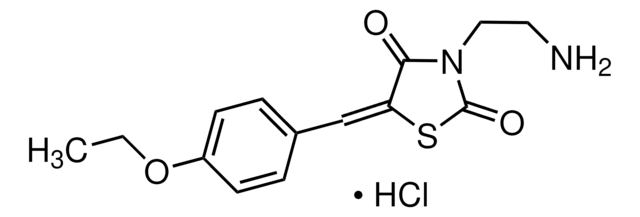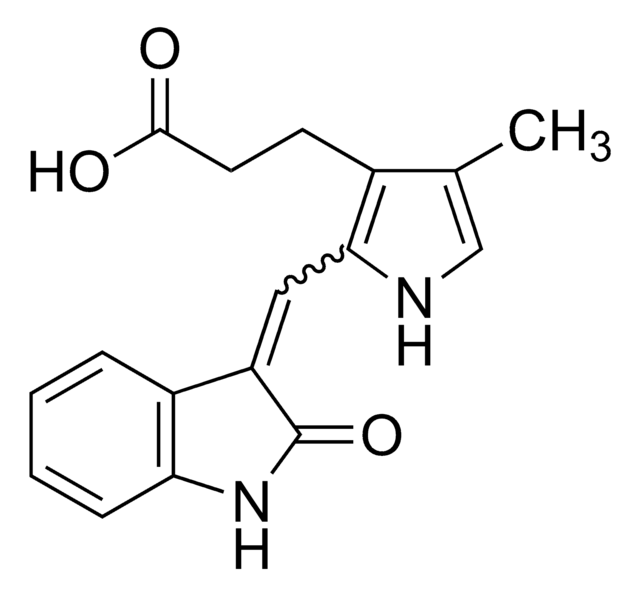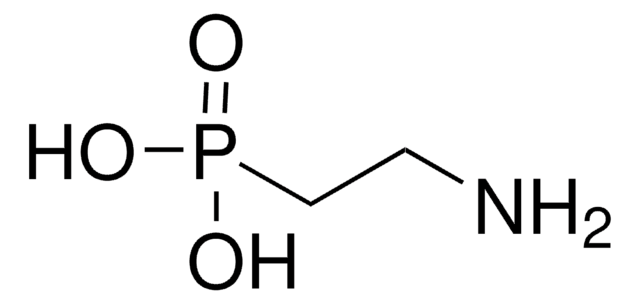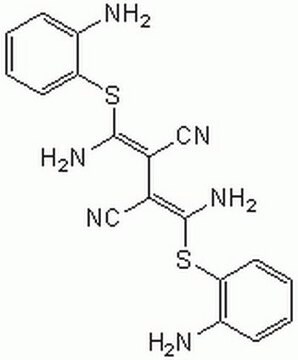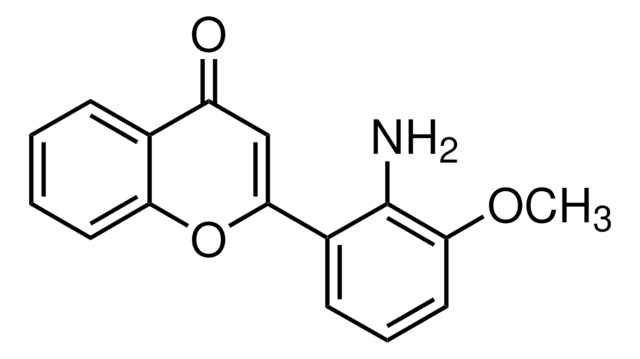SML0320
FR180204
≥98% (HPLC)
Sinónimos:
5-(2-Phenyl-pyrazolo[1,5-a]pyridin-3-yl)-1H-pyrazolo[3,4-c]pyridazin-3-ylamine, 5-(2-Phenylpyrazolo[1,5-a]pyridin-3-yl)-1H-pyrazolo[3,4-c]pyridazin-3-amine, FR 180204
About This Item
Productos recomendados
Análisis
≥98% (HPLC)
formulario
powder
color
faintly yellow to dark yellow
solubilidad
DMSO: ≥10 mg/mL
temp. de almacenamiento
2-8°C
cadena SMILES
Nc1n[nH]c2nnc(cc12)-c3c(nn4ccccc34)-c5ccccc5
InChI
1S/C18H13N7/c19-17-12-10-13(20-22-18(12)23-21-17)15-14-8-4-5-9-25(14)24-16(15)11-6-2-1-3-7-11/h1-10H,(H3,19,21,22,23)
Clave InChI
XVECMUKVOMUNLE-UHFFFAOYSA-N
Aplicación
- to block extracellular-signal-regulated kinase (ERK) in order to validate whether homeobox B7 (HOXB7) regulates the migration and proliferation process via AKT/mitogen-activated protein kinases (MAPK) signaling
- of extracellular-signal-regulated kinase (ERK) to study the effects of signaling pathway inhibitors on differentiation and cell traction stress
- to determine if phosphorylation of this signaling protein is essential for mesenchymal stromal cell (MSC) derived therapeutic efficacy
Acciones bioquímicas o fisiológicas
Características y beneficios
Código de clase de almacenamiento
11 - Combustible Solids
Clase de riesgo para el agua (WGK)
WGK 3
Punto de inflamabilidad (°F)
Not applicable
Punto de inflamabilidad (°C)
Not applicable
Certificados de análisis (COA)
Busque Certificados de análisis (COA) introduciendo el número de lote del producto. Los números de lote se encuentran en la etiqueta del producto después de las palabras «Lot» o «Batch»
¿Ya tiene este producto?
Encuentre la documentación para los productos que ha comprado recientemente en la Biblioteca de documentos.
Los clientes también vieron
Artículos
The mitogen-activated protein kinase (MAPK) family consists of both stress activated (SAPK) and mitogen-activated (MAPK) protein kinases. They form a network of signal transduction cascades that mediate cellular responses to a diverse range of stimuli, including growth factors, chemical or osmotic stress, irradiation, bacterial infection and proinflammatory cytokines.
Nuestro equipo de científicos tiene experiencia en todas las áreas de investigación: Ciencias de la vida, Ciencia de los materiales, Síntesis química, Cromatografía, Analítica y muchas otras.
Póngase en contacto con el Servicio técnico
